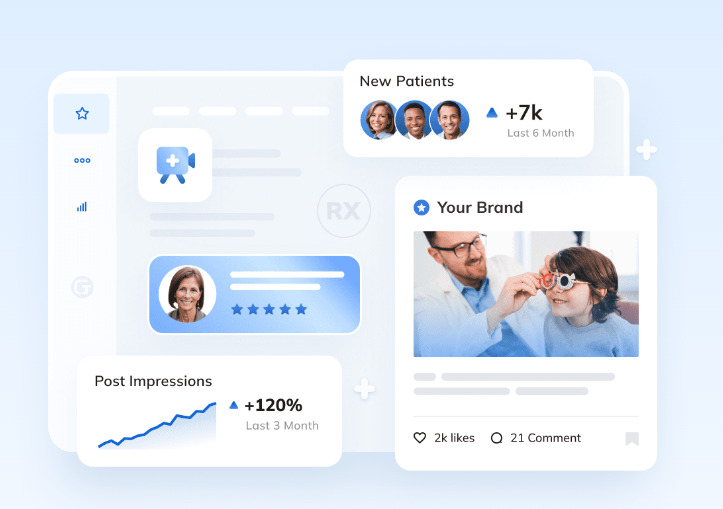
In the evolving landscape of home health care, Durable Medical Equipment (DME) plays a pivotal role in enhancing the quality of life for patients. With the increasing shift towards at-home care, selecting the right DME products becomes crucial for both patients and caregivers. This article explores the top five essential bonafide DME products that are indispensable in home health care settings, highlighting their features, benefits, and best practices for usage.
1. Mobility Aids
Overview
Mobility aids are critical for patients with limited mobility, enabling them to navigate their homes safely and independently. These devices help prevent falls and provide the necessary support for those recovering from surgery or dealing with chronic conditions.
Types of Mobility Aids
- Walkers: These provide stability and support, perfect for patients recovering from surgery or with balance issues.
- Wheelchairs: Manual or electric, wheelchairs cater to varying degrees of mobility impairment.
- Canes: A simple yet effective tool for those needing minimal support while walking.
Benefits
- Independence: Mobility aids empower patients to perform daily activities with greater ease.
- Safety: These devices significantly reduce the risk of falls and related injuries.
- Comfort: Most mobility aids are designed with ergonomics in mind, enhancing user comfort.
Best Practices
- Regularly assess the patient’s mobility needs to determine if adjustments or upgrades to their equipment are necessary.
- Ensure that mobility aids are maintained and serviced to ensure safety and functionality.
2. Home Oxygen Therapy Equipment
Overview
Home oxygen therapy equipment is essential for patients with respiratory issues, such as COPD, asthma, or COVID-19 recovery. Providing supplemental oxygen can significantly enhance a patient’s quality of life and health outcomes.
Types of Oxygen Therapy Equipment
- Oxygen Concentrators: These devices extract oxygen from the air and deliver it to the patient, ideal for continuous use at home.
- Portable Oxygen Tanks: For patients on the go, portable tanks provide supplemental oxygen in a more mobile form.
- Nebulizers: These devices convert liquid medication into a mist, making it easier for patients with respiratory conditions to breathe.
Benefits
- Enhanced Quality of Life: Supplemental oxygen helps patients breathe easier, facilitating daily activities and improving overall wellbeing.
- Increased Mobility: Portable options allow patients to maintain an active lifestyle.
- Tailored Care: Oxygen therapy can be adjusted based on individual patient needs and conditions.
Best Practices
- Ensure that oxygen equipment is regularly inspected and maintained for optimal performance.
- Educate caregivers and family members about the proper use and safety precautions related to oxygen therapy.
3. Hospital Beds
Overview
Hospital beds provide a safe and comfortable sleeping environment for patients requiring long-term care at home. These adjustable beds accommodate various medical conditions and enhance patient comfort.
Features of Hospital Beds
- Adjustable Heights: Allows for easy transfers in and out of bed.
- Adjustable Positioning: Patients can elevate their head or legs, facilitating comfort and aiding in medical conditions like sleep apnea or edema.
- Side Rails: Provides safety by preventing falls during the night.
Benefits
- Improved Comfort: Adjustable positions help alleviate pain and discomfort for patients with chronic conditions.
- Enhanced Caregiving: Hospital beds make it easier for caregivers to provide care without straining their backs or compromising patient safety.
- Versatility: These beds can accommodate a wide range of medical conditions and needs.
Best Practices
- Regularly check and maintain the bed’s mechanisms to ensure safety and functionality.
- Involve patients in the adjustment process to ensure their comfort and preferences are respected.
4. Pressure Relief Mattresses
Overview
Pressure relief mattresses are essential for patients who are bedridden or have limited mobility, helping prevent pressure sores and enhance comfort. These mattresses are designed to redistribute pressure and provide a supportive sleeping surface.
Types of Pressure Relief Mattresses
- Air-Fluidized Beds: These provide a unique surface that reduces pressure and friction on the skin.
- Alternating Pressure Mattresses: These mattresses use air cells that inflate and deflate, helping to improve circulation and reduce pressure points.
- Memory Foam Mattresses: These offer comfort and support, contouring to the patient’s body shape.
Benefits
- Prevention of Pressure Ulcers: Proper pressure relief significantly reduces the risk of bedsores in vulnerable patients.
- Enhanced Comfort: These mattresses provide a comfortable sleeping surface, improving the quality of sleep.
- Support for Healing: Patients with existing wounds benefit from the supportive nature of pressure relief mattresses.
Best Practices
- Regularly assess the patient’s skin condition and mattress effectiveness to ensure ongoing pressure relief.
- Educate caregivers about repositioning techniques to further reduce pressure ulcer risk.
5. Patient Lifts and Slings
Overview
Patient lifts and slings are essential for safely transferring patients who are unable to move independently. These devices reduce the risk of injury for both patients and caregivers during transfers.
Types of Patient Lifts
- Manual Lifts: Require the caregiver to physically lift the patient using a sling.
- Electric Lifts: Powered lifts that make the transfer process easier and safer for both the patient and the caregiver.
Benefits
- Safety: Reduces the risk of falls and injuries during patient transfers.
- Ease of Use: Makes it easier for caregivers to assist patients without straining their backs or muscles.
- Increased Independence: Patients can participate in their own transfers with the right equipment.
Best Practices
- Train caregivers on the proper use of patient lifts to maximize safety and effectiveness.
- Regularly inspect and maintain the lifts and slings to ensure they remain safe for use.
Conclusion
Choosing the right DME products for home health care is essential for enhancing patient comfort, safety, and independence. The top five essential bonafide DME products—mobility aids, home oxygen therapy equipment, hospital beds, pressure relief mattresses, and patient lifts—provide the necessary support for patients and caregivers alike. By understanding the features, benefits, and best practices associated with these products, caregivers can ensure optimal care and improved quality of life for their patients.